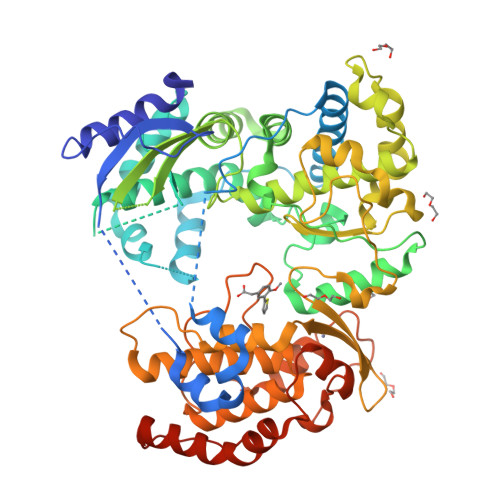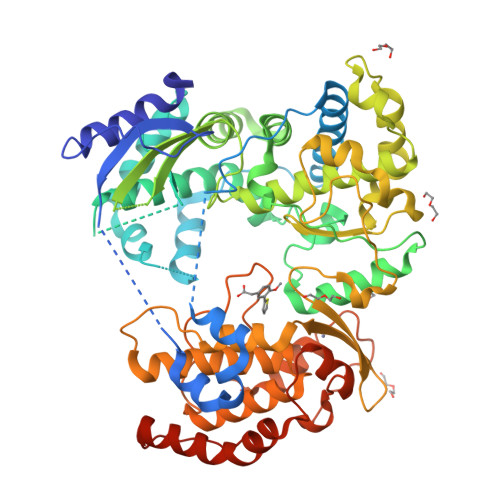Development and validation of RdRp Screen, a crystallization screen for viral RNA-dependent RNA polymerases.
Riccio, F., Talapatra, S.K., Oxenford, S., Angell, R., Mazzon, M., Kozielski, F.(2019) Biol Open 8
- PubMed: 30602529
- DOI: https://doi.org/10.1242/bio.037663
- Primary Citation of Related Structures:
6H80, 6H9R - PubMed Abstract:
Members of the Flaviviridae family constitute a severe risk to human health. Whilst effective drugs have been developed against the hepacivirus HCV, no antiviral therapy is currently available for any other viruses, including the flaviviruses dengue (DENV), West Nile and Zika viruses. The RNA-dependent RNA polymerase (RdRp) is responsible for viral replication and represents an excellent therapeutic target with no homologue found in mammals. The identification of compounds targeting the RdRp of other flaviviruses is an active area of research. One of the main factors hampering further developments in the field is the difficulty in obtaining high-quality crystal information that could aid a structure-based drug discovery approach. To address this, we have developed a convenient and economical 96-well screening platform. We validated the screen by successfully obtaining crystals of both native DENV serotype 2 and 3 RdRps under several conditions included in the screen. In addition, we have obtained crystal structures of RdRp3 in complex with a previously identified fragment using both soaking and co-crystallization techniques. This work will streamline and accelerate the generation of crystal structures of viral RdRps and provide the community with a valuable tool to aid the development of structure-based antiviral design.
Organizational Affiliation:
Department of Pharmaceutical and Biological Chemistry, UCL School of Pharmacy, 29-39 Brunswick Square, London, WC1N 1AX, United Kingdom.





















